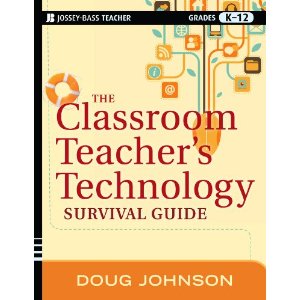BFTP: Gianormous Projects
 Saturday, March 24, 2012 at 05:00AM
Saturday, March 24, 2012 at 05:00AM A weekend Blue Skunk "feature" will be a revision of an old post. I'm calling this BFTP: Blast from the Past. Original post May 4, 2007
The old fix/flex debate often raises its scaley head in library discussions. More often than not, these discussions produce more heat than light and I do my best to stay out them since I've already said my piece (and probably too much).
One percieved benefit of a flexibly scheduled library program is that it allows students blocks of time to work on a project "in-depth." As one writer puts it: From my perspective, the problem with "working around" fixed schedules is that these schedules often do not allow for more in-depth inquiry/research/literature projects that impact student achievement and life-long learning.
From both personal experience and from the comments of our district's LMSs, the elementary project that drags on, week after week while being worked on in 20- minute bits, is indeed frustrating for both students and teachers. Is having one or two gianormous reseach/tech projects a year the best way to teach information and technology skills in either a fixed or flexible schedule, especially at the elementary level?
From somewhere in my files I drug this up and it makes a lot of sense:
Brain research shows that permanent learning only takes place when research activities are assigned frequently enough that students can exercise and develop the essential skills of critical reading, writing, higher-order thinking, and presenting ideas and opinions with a purpose.
Brain research also shows that these activities must be related to student interests about their world and provide the opportunity for them to develop their own “reasoned opinions” based on researched facts and expert opinions. This desired learning is impossible to do for all students when schools depend on the “term paper” as their only research strategy.
A recent study of Social Studies teachers indicates that the age of the term paper is rapidly disappearing and being replaced by shorter and more frequent types of mini-research. Education Week – November 20, 2002.
One alternative to the semester-long project is by asking students to do "everyday problem-solving." In this earlier column, I wrote:
I am concerned that when we base our information problem-solving instruction around a single giant unit or two each year, students through lack of opportunity to practice also forget all these important defining, locating, accessing, synthesizing, communicating and evaluating skills. It’s why we seem to re-teach the use of the library catalog, search engines, website evaluation, online periodical databases, and even word processing commands year after year to the same group of students who seem to have once grasped them.
Practicing information problem solving needs to be a daily activity for every student in our schools, not just a biennial “event.” It’s easy to quickly brainstorm a whole raft of information problem solving mini-activities that can be done in either the media center or classroom:
- Use the Internet to check the weather forecast and make a recommendation about dress for the next day.
- Search and report an interesting fact about the author of the next story being read by the class.
- Email students in another class to ask their opinions on a discussion topic.
- Recommend a movie or television show to watch the coming weekend using a critic’s advice.
- Find two science articles that relate to the current science unit. Evaluate the credibility of the sources of information.
- Locate a place from a current news headline or class reading on an online map resource like .
- Recommend a book to a classmate based on other books that classmate has read using the school’s library catalog or an Internet source.
- Update the class webpage with interesting facts from units studied and links to related information on the web.
- Estimate the number of calories and fat grams in the meal served in the cafeteria that day.
- Find a “quote of the day” on a specific topic and use a graphics program to illustrate and print it out.
Note that most of these tasks take fewer than ten or fifteen minutes for a skilled information searcher to complete. Each has direct relevance to the student’s “real” academic or personal life. Reporting the results of the research is informal and interesting. Most of these activities are meaningful ones that adults do as well.
 I'd hate to think that students would come to believe that the only time to do research is when they are in the LMC. That is is something done only for academic pursuits. That the end result is always a paper or presentation.
I'd hate to think that students would come to believe that the only time to do research is when they are in the LMC. That is is something done only for academic pursuits. That the end result is always a paper or presentation.
Aren't we all daily problem-solvers? Shouldn't our kids be as well?
Take one a day.









Reader Comments